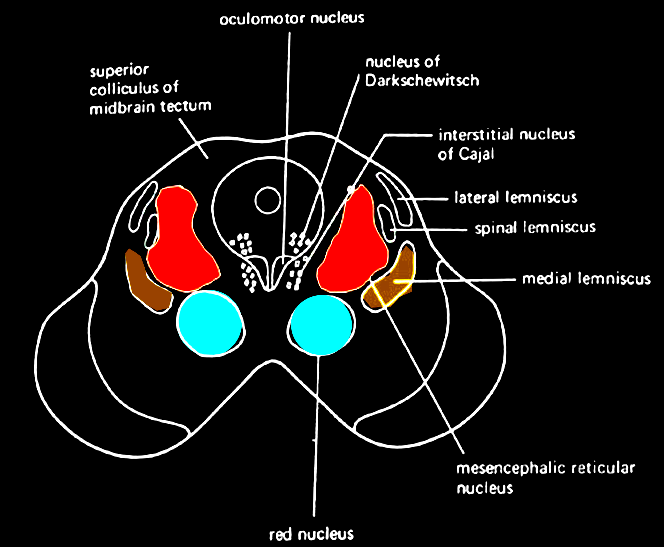[1]
Fukushima K. The interstitial nucleus of Cajal and its role in the control of movements of head and eyes. Progress in neurobiology. 1987:29(2):107-92
[PubMed PMID: 3108957]
[2]
Dalezios Y, Scudder CA, Highstein SM, Moschovakis AK. Anatomy and physiology of the primate interstitial nucleus of Cajal. II. Discharge pattern of single efferent fibers. Journal of neurophysiology. 1998 Dec:80(6):3100-11
[PubMed PMID: 9862908]
[3]
Fukushima K, Takahashi K, Fukushima J, Ohno M, Kimura T, Kato M. Effects of lesion of the interstitial nucleus of Cajal on vestibular nuclear neurons activated by vertical vestibular stimulation. Experimental brain research. 1986:64(3):496-504
[PubMed PMID: 3803487]
[4]
Fukushima K. The interstitial nucleus of Cajal in the midbrain reticular formation and vertical eye movement. Neuroscience research. 1991 Apr:10(3):159-87
[PubMed PMID: 1650435]
[5]
Kokkoroyannis T, Scudder CA, Balaban CD, Highstein SM, Moschovakis AK. Anatomy and physiology of the primate interstitial nucleus of Cajal I. efferent projections. Journal of neurophysiology. 1996 Feb:75(2):725-39
[PubMed PMID: 8714648]
[6]
Molle KD, Chédotal A, Rao Y, Lumsden A, Wizenmann A. Local inhibition guides the trajectory of early longitudinal tracts in the developing chick brain. Mechanisms of development. 2004 Feb:121(2):143-56
[PubMed PMID: 15037316]
[7]
Klier EM, Wang H, Constantin AG, Crawford JD. Midbrain control of three-dimensional head orientation. Science (New York, N.Y.). 2002 Feb 15:295(5558):1314-6
[PubMed PMID: 11847347]
[8]
Lakke EA. The projections to the spinal cord of the rat during development: a timetable of descent. Advances in anatomy, embryology, and cell biology. 1997:135():I-XIV, 1-143
[PubMed PMID: 9257458]
Level 3 (low-level) evidence
[10]
Klier EM, Wang H, Crawford JD. Interstitial nucleus of cajal encodes three-dimensional head orientations in Fick-like coordinates. Journal of neurophysiology. 2007 Jan:97(1):604-17
[PubMed PMID: 17079347]
[11]
Shaikh AG, Zee DS, Crawford JD, Jinnah HA. Cervical dystonia: a neural integrator disorder. Brain : a journal of neurology. 2016 Oct:139(Pt 10):2590-2599
[PubMed PMID: 27324878]
[12]
HASSLER R, HESS WR. [Experimental and anatomical findings in rotatory movements and their nervous apparatus]. Archiv fur Psychiatrie und Nervenkrankheiten, vereinigt mit Zeitschrift fur die gesamte Neurologie und Psychiatrie. 1954:192(5):488-526
[PubMed PMID: 13229347]
[13]
Hassler R, Dieckmann G. Stereotactic treatment of different kinds of spasmodic torticollis. Confinia neurologica. 1970:32(2):135-43
[PubMed PMID: 4926178]

